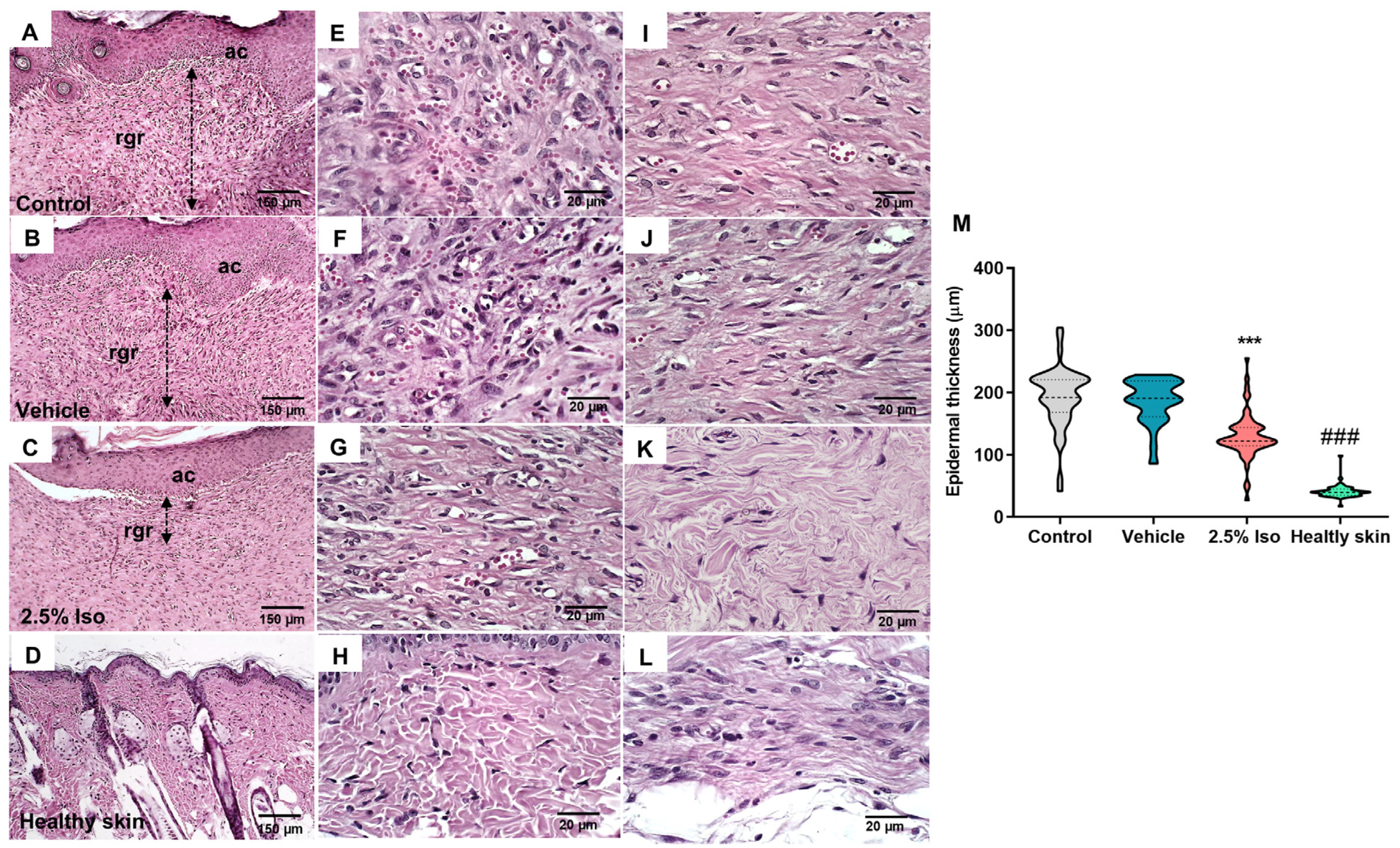Correction: Hora et al. Isoorientin Improves Excisional Skin Wound Healing in Mice. Pharmaceuticals 2024, 17, 1368

Reference
- Hora, A.B.; Biano, L.S.; Nascimento, A.C.S.; Camargo, Z.T.; Heiden, G.I.; Albulquerque-Júnior, R.L.C.; Grespan, R.; Aragão, J.M.D.A.; Camargo, E.A. Isoorientin Improves Excisional Skin Wound Healing in Mice. Pharmaceuticals 2024, 17, 1368. [Google Scholar] [CrossRef] [PubMed]
Disclaimer/Publisher’s Note: The statements, opinions and data contained in all publications are solely those of the individual author(s) and contributor(s) and not of MDPI and/or the editor(s). MDPI and/or the editor(s) disclaim responsibility for any injury to people or property resulting from any ideas, methods, instructions or products referred to in the content. |
© 2025 by the authors. Licensee MDPI, Basel, Switzerland. This article is an open access article distributed under the terms and conditions of the Creative Commons Attribution (CC BY) license (https://creativecommons.org/licenses/by/4.0/).
Share and Cite
Hora, A.B.; Biano, L.S.; Nascimento, A.C.S.; Camargo, Z.T.; Heiden, G.I.; Albulquerque-Júnior, R.L.C.; Grespan, R.; Aragão, J.M.D.A.; Camargo, E.A. Correction: Hora et al. Isoorientin Improves Excisional Skin Wound Healing in Mice. Pharmaceuticals 2024, 17, 1368. Pharmaceuticals 2025, 18, 1343. https://doi.org/10.3390/ph18091343
Hora AB, Biano LS, Nascimento ACS, Camargo ZT, Heiden GI, Albulquerque-Júnior RLC, Grespan R, Aragão JMDA, Camargo EA. Correction: Hora et al. Isoorientin Improves Excisional Skin Wound Healing in Mice. Pharmaceuticals 2024, 17, 1368. Pharmaceuticals. 2025; 18(9):1343. https://doi.org/10.3390/ph18091343
Chicago/Turabian StyleHora, Aline B., Laiza S. Biano, Ana Carla S. Nascimento, Zaine T. Camargo, Greice I. Heiden, Ricardo L. C. Albulquerque-Júnior, Renata Grespan, Jessica M. D. A. Aragão, and Enilton A. Camargo. 2025. "Correction: Hora et al. Isoorientin Improves Excisional Skin Wound Healing in Mice. Pharmaceuticals 2024, 17, 1368" Pharmaceuticals 18, no. 9: 1343. https://doi.org/10.3390/ph18091343
APA StyleHora, A. B., Biano, L. S., Nascimento, A. C. S., Camargo, Z. T., Heiden, G. I., Albulquerque-Júnior, R. L. C., Grespan, R., Aragão, J. M. D. A., & Camargo, E. A. (2025). Correction: Hora et al. Isoorientin Improves Excisional Skin Wound Healing in Mice. Pharmaceuticals 2024, 17, 1368. Pharmaceuticals, 18(9), 1343. https://doi.org/10.3390/ph18091343




